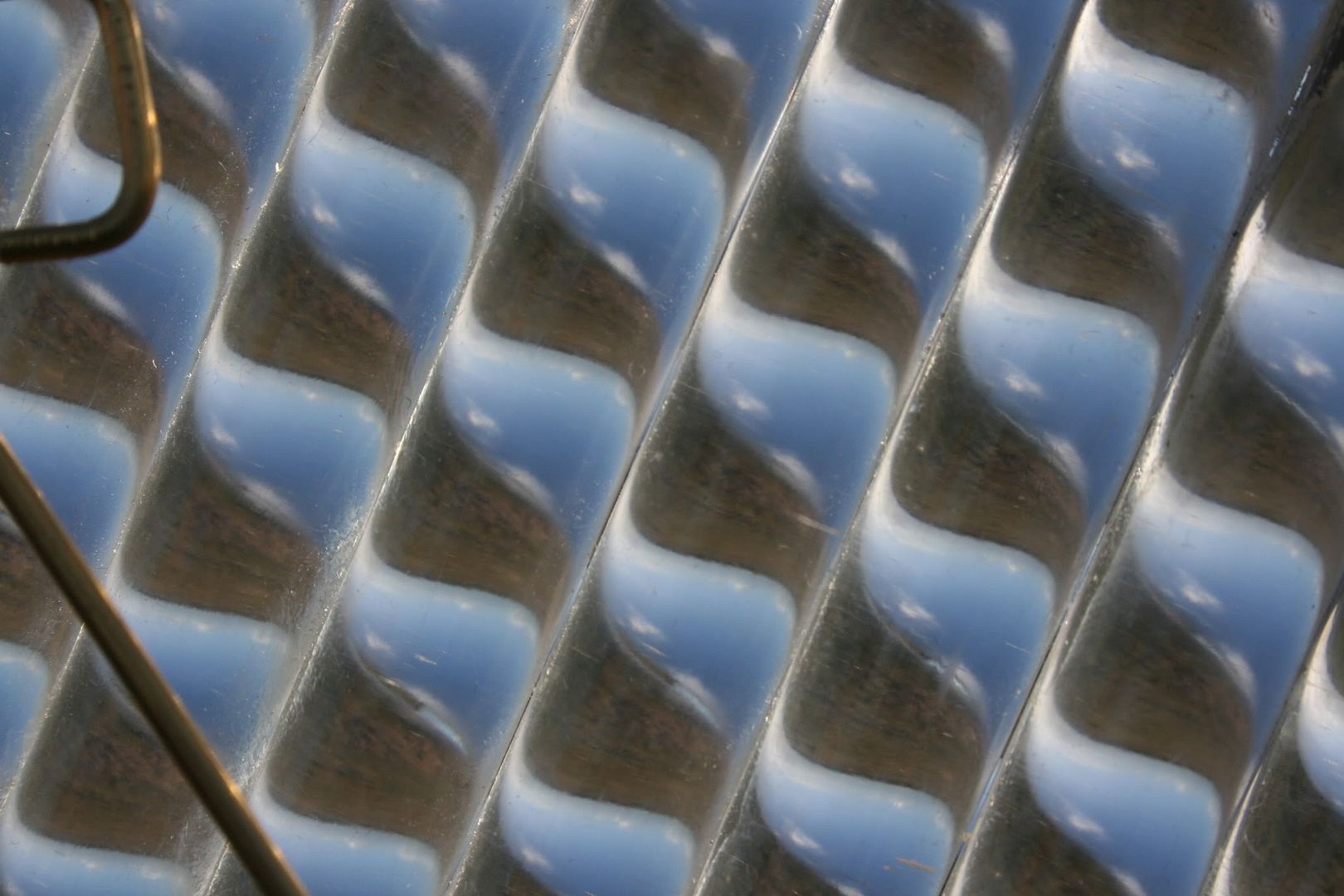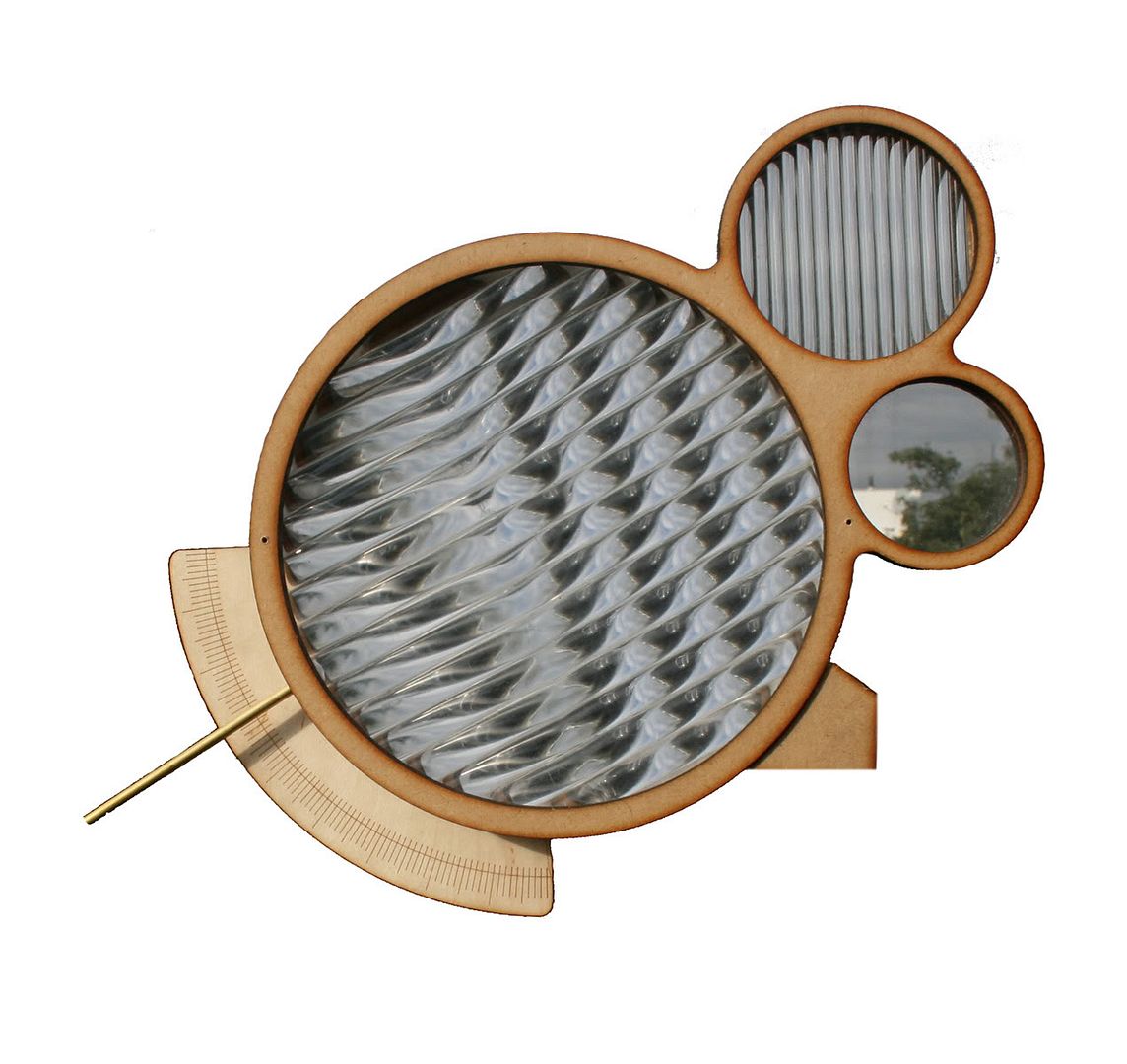Viewing devices of Dungeness (2007).


A flat terrain with very little puncturing the landscape, Dungeness presented itself as an inhospitable place; a bleak environment. A nauseating and depressing beach, with a lack of human intervention across its desolate expanse. With this negative response to the site, I sought to change what I saw, thus I continued with my previous theme of distortion and intended to maintain this in a physical manner.
By bending plastic, a 'window' could be created to view the landscape through a level of distortion. Two of these plastic lense were made, each specific to defining architecture in Dungeness. The first vertically fractures the powerstation, a particularly horizontal building. The effect is a repetition of elements of the landscape.

The intention was to contain the landscape in order to reduce the feeling of agoraphobia experienced, much like a fish-eye lens, wrapping the landscape within it. The landscape, as a vast expanse, infinite in its 360º panorama of horizon, is condensed into the frames of the device. The result is a more manageable Dungeness, smaller finite moments which can be focused on. It is the sweeping motion of the mutable lens which sucks in the views with a satisfying fluency.
The two lenses, the curved and the straight, coalesce to form the primary lens. This is supplemented by a secondary lens; a single screen with straight Perspex rod. In addition, a control lens is present for purpose of comparison, their respective sizes determined by a hierarchy of their necessity to view the landscape.
The aesthetics are based around the porthole window, as found in the toilets of the pub on site, but also closely associated with much of the boating imagery to be found throughout Dungeness. The synthetic Perspex lenses are juxtaposed with the natural wooden frame which holds them, and a more traditional metal (brass) for the finishings.
An instrument similar to a protractor was developed in order to allow a measurement of the distortion within the device, its shape was a response to the ‘sweeping’ motion of the lens, and the developed language which derives from the containment of the view; sucked in. The brass arms on the device depict the two extremes of the device, on at 0º and the other, complete at 90º. Since the device created multiple contained images, these help to focus on a single frame, both offering very different distortions.
